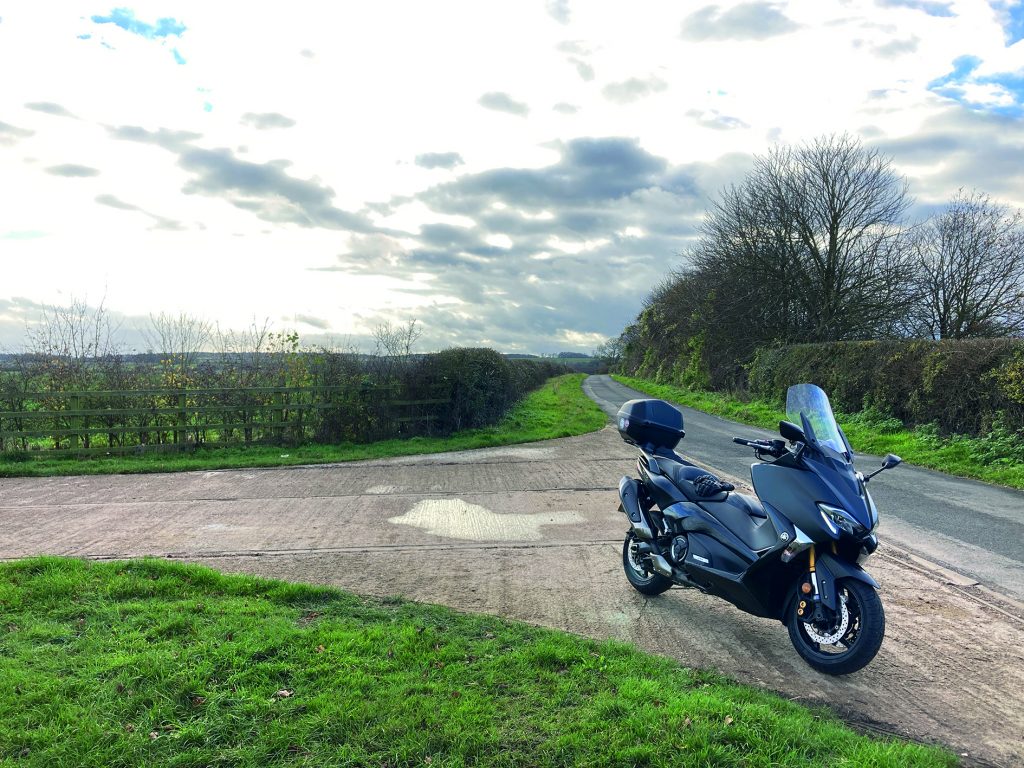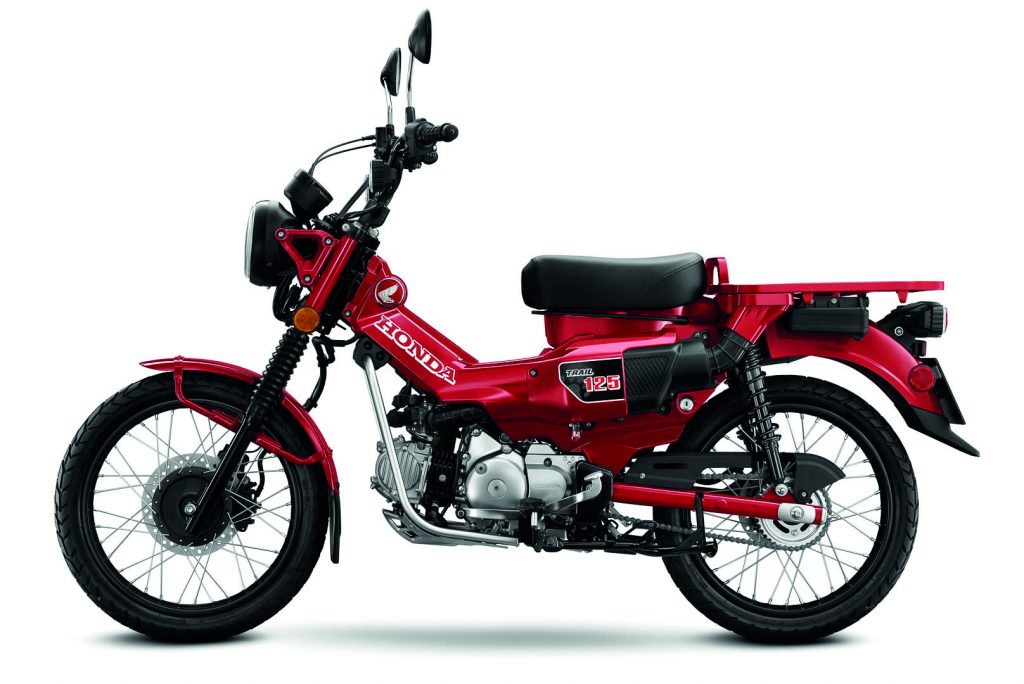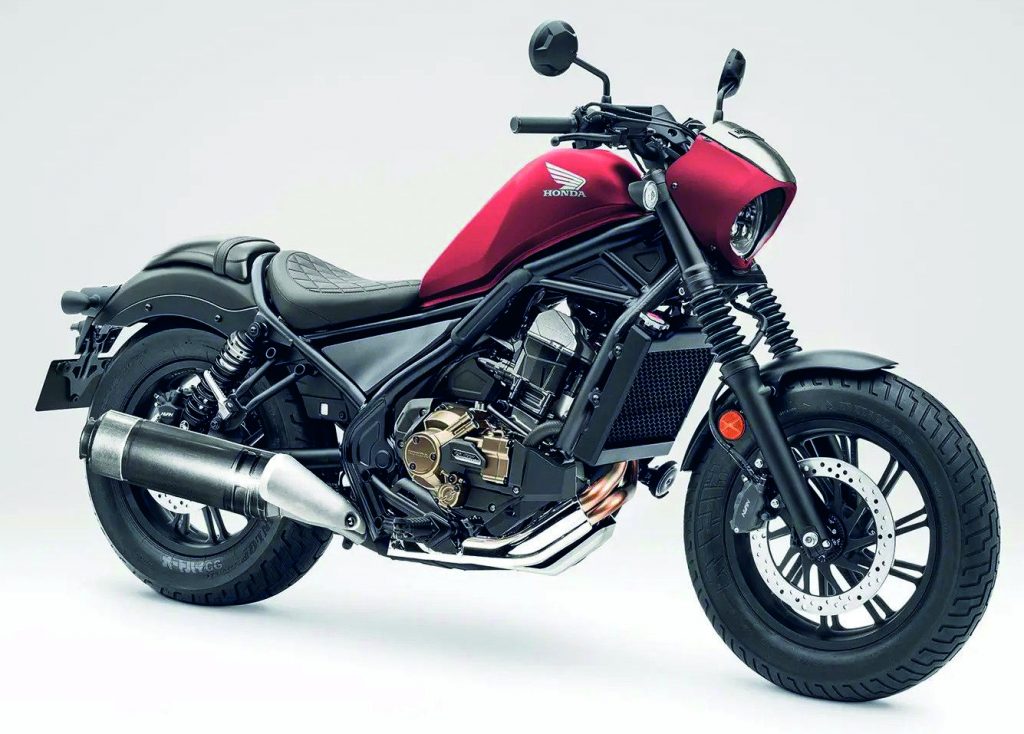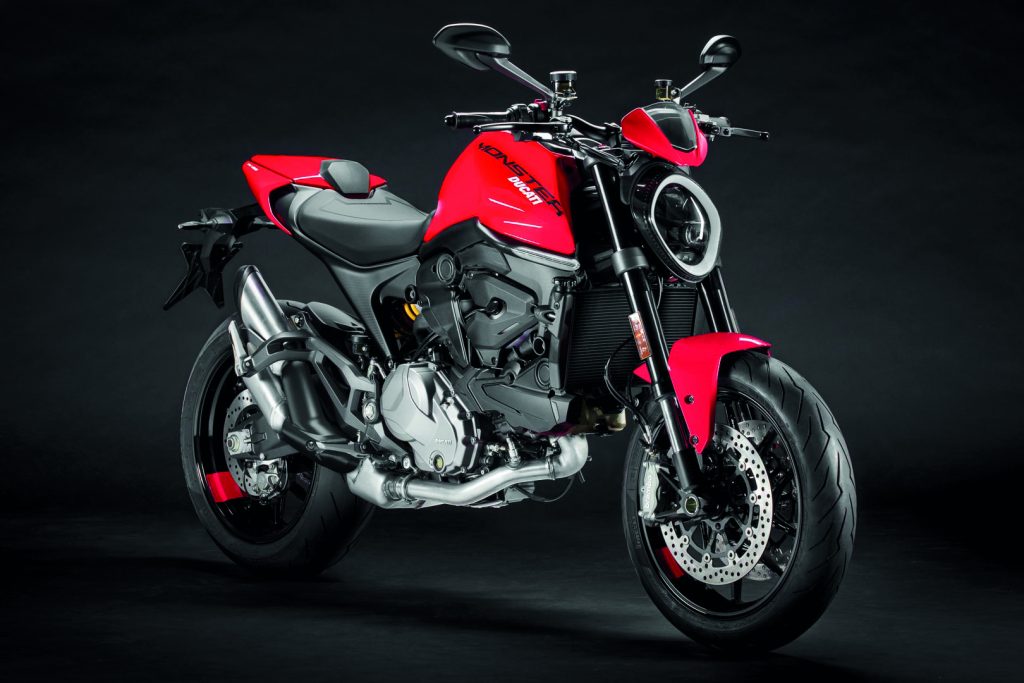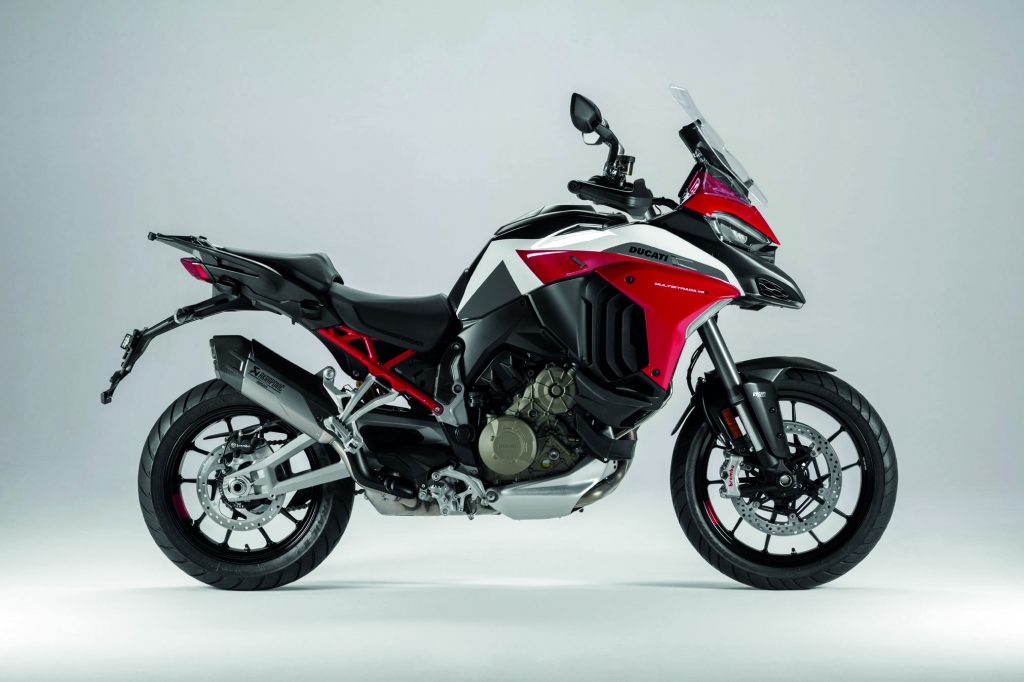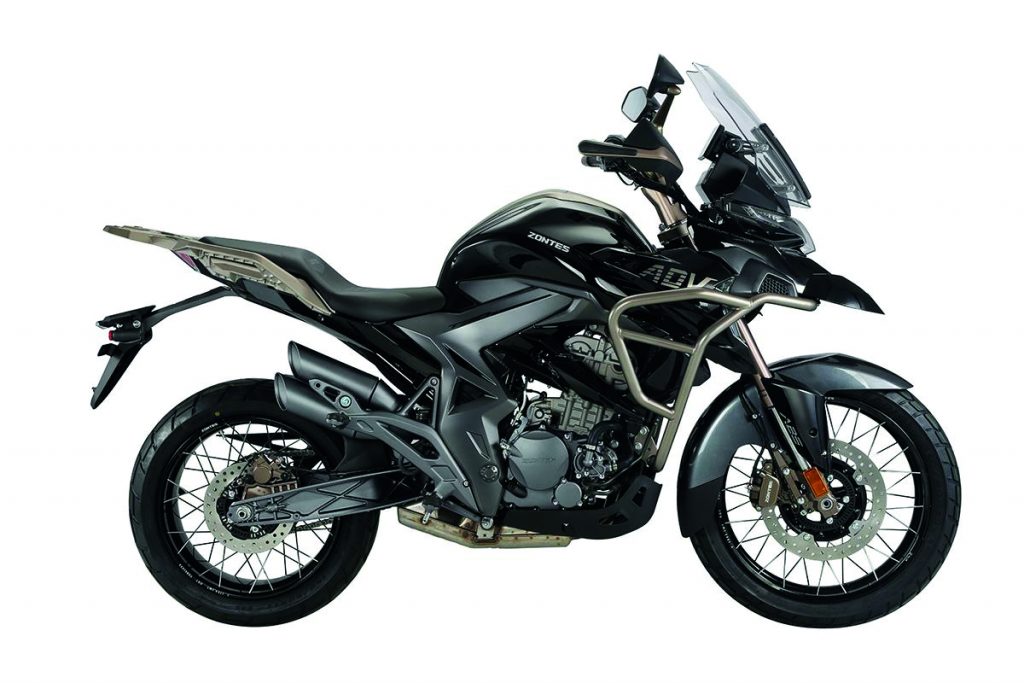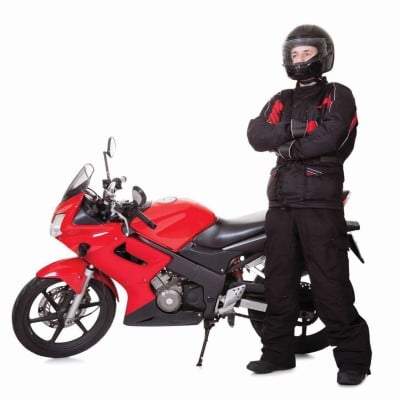So, 2020 is finally over. I don’t think there has ever been a year that so many people all over the world have looked forward to seeing the back of. As motorcyclists in the UK, we snatched a scant few weeks of good riding between various lockdowns, but European trips were largely cancelled. The smart ones with flexible schedules shot off to Scotland at the earliest opportunity, but the weather was typically appalling by that point in the summer. In the end I escaped the claustrophobia of my own four walls on four wheels, not two.
My motorcycling blog saw traffic more than double as bored bikers headed online for their motorcycling fix, but I was generally stuck at home and able to provide little in the way of new content. With a vaccine on the horizon and hopes of a return to normality for 2021, has the global pandemic permanently changed motorcycling in any way?
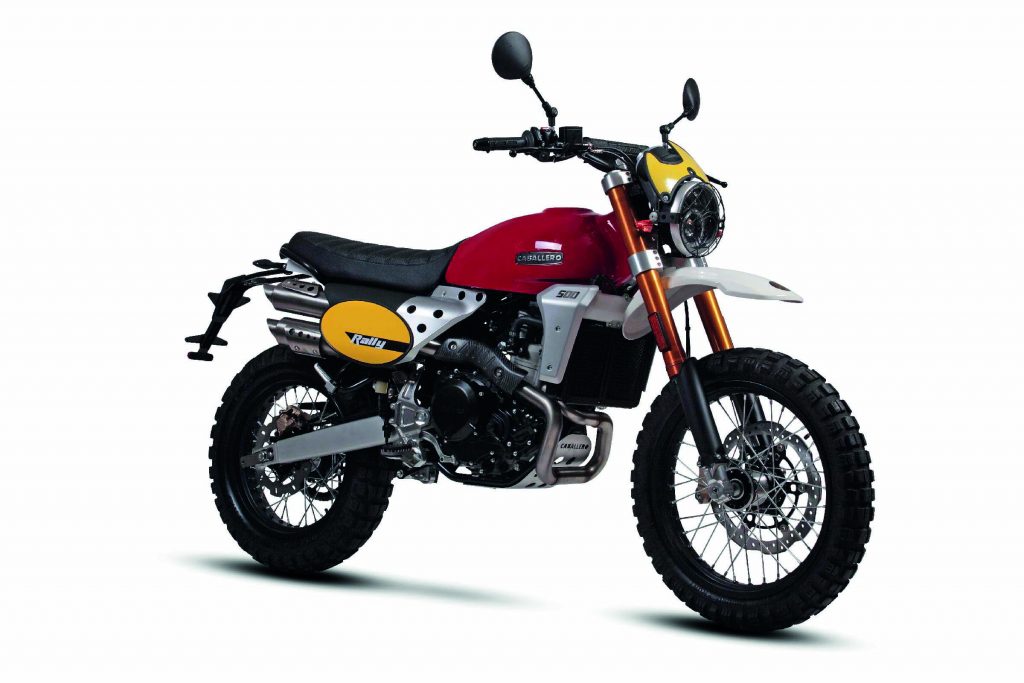
Looking over my notes from the last few weeks’ sustained barrage of press-releases a few trends do start to emerge. For one thing, we might be about to see history repeat itself as the complacent European and Japanese brands find themselves tripping over more affordable and increasingly well-spec’ed offerings from India and China. The flood of cheap and nasty 125s has abated, with quality and features improving as product ranges expand up the capacity ladder.
At the same time, we’re seeing traditionally off-road-exclusive brands like Fantic bring genuinely intriguing road-legal offerings to market. I don’t quite think we’re going to see Triumph once again swept aside in a wave of better and cheaper machinery as they were in the 70’s. The more established brands do seem to have learnt their lessons from history. Manufacturers with existing small-capacity programmes are expanding them; those without are scrambling to extend their large-capacity-focused ranges downwards. Still, competition is going to be fierce and some of the established businesses may not be able to survive on the more meagre profit margins that will be on offer once traditional motorcyclists stop buying £20,000 toys in the numbers they’ve become accustomed to.
As old age begins to bite, motorcycling’s traditional bulk-buyers are increasingly looking for smaller and lighter machines that will be less likely to overwhelm them at the next stop light. The few young riders that are fighting their way into the sport despite all the roadblocks don’t have any loyalty to the old brands and are just as likely to consider a Zontes as they are a Yamaha. They also don’t know or care which brands are genuinely European and which are simply classic brands slapped on Chinese-made hardware. A long-time motorcyclist might be able to tell the difference between an unbranded brake calliper and a top-shelf Brembo item, but they’ll still struggle to convince a cash-strapped twenty-something that such jewellery is worth five times the price.
All of this means that I’ll be watching how the industry reacts and changes over the next couple of years with great interest, and that the list of bikes I’m looking forward to riding in 2021 has never been more diverse. Let’s take a look, shall we?
HONDA
By sheer number of interesting new models, the Japanese brand takes the top spot. That being said, like many of their established competitors, we’re mostly talking about small capacity bumps (CRF300L, Forza 350/Forza 750) and light styling work (NC750X) as older engines are reworked to meet the new Euro5 emissions regulations that come into force this January. We may no longer be part of the EU, but the UK market isn’t anywhere near big enough to justify the development costs of its own models, so we get what Europe gets. The good news is that in most cases these emissions-related tweaks also result in more power and in a few surprising, but very welcome cases, less weight.
But wow, talk about blindsided – I did not see either the Trail 125 or CMX1100 Rebel coming, though perhaps I should have. In the same way that the original Trail 90 was derived from the C90 of the time, it must have been relatively cheap/easy to repurpose and restyle the current Cub platform to create this intriguing new off-road focused model. The low-range gearbox its ancestor featured may be missing, but the Trail 125 makes up for it with more power.
And while ground clearance improvements may be marginal, that rear-mounted snorkel and light weight should mean you can take this thing damn near anywhere – as long as you’re not in a hurry. The only slightly worrying thing is that Honda UK has been strangely silent on UK/European pricing and availability, with all the press focused on the US launch. Here’s hoping we’re not going to miss out like we did with the CTX700…
The Rebel 1100 is interesting if only because it shows that Honda are serious about extending their platform-sharing approach to every engine in their range. Shoehorning the latest Africa Twin’s 1.1-litre parallel twin engine complete with DCT gearbox into their existing CMX500 Rebel chassis caught everyone by surprise, but now adds credence to the rumours of a similarly-powered CB1100X sports-tourer. I’ve got a soft spot for feet-forward cruisers, but an even softer spot for do-everything road bikes that combine reasonable power with all-day comfort and hard luggage. Add in Honda’s excellent six-speed dual-clutch transmission and you’ve got a potential 2022 bike I’d ride tomorrow.
Triumph
Triumph’s new entries are notable, if not necessarily terribly compelling. The brand announced it would cut a quarter of its UK workforce during the summer and the pressure was presumably on to put some new metal in dealers without spending any significant sums on development. The internet (and some personal friends) collectively lost their minds over the Trident 660 and as an avowed previous-generation Street Triple fan they assumed I would be all over it. But I’m afraid that I may be as cynical about this machine as I suspect Triumph’s product planners were. Detuning and sleeving down their current 765cc three-cylinder engine and slotting it into a cheaper steel-tube chassis with even cheaper brakes and suspension is a price-point play, plain and simple.
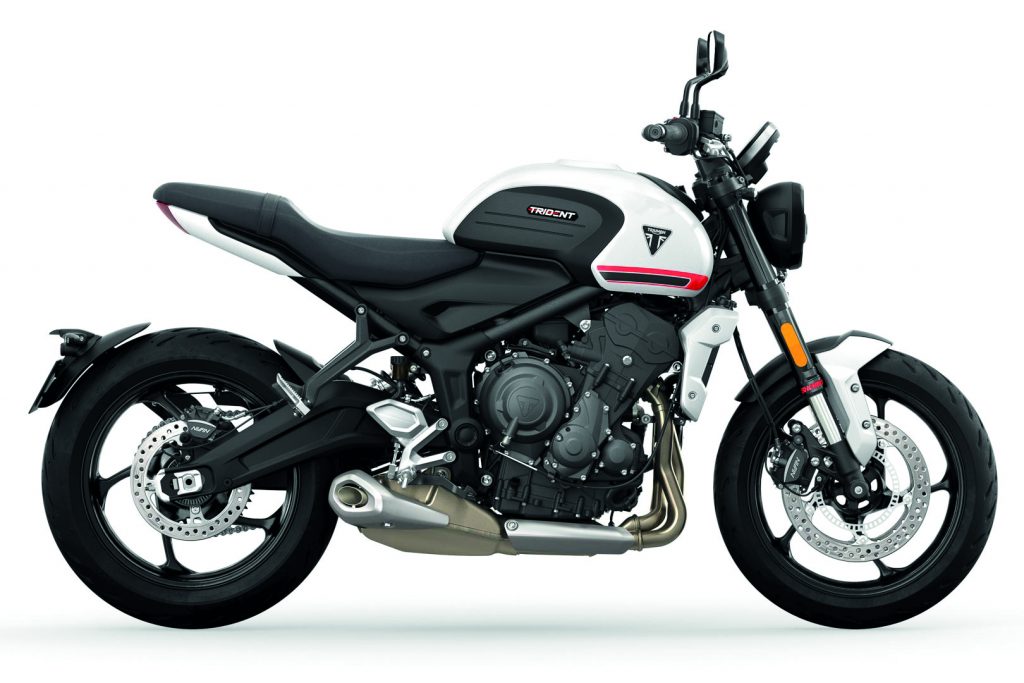
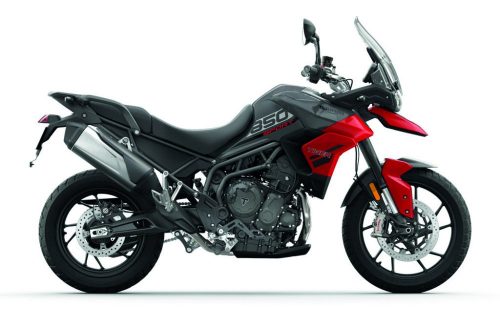
The retro styling is very fashionable right now, and the £7k price is extremely competitive, but it’s very telling that journalists coming back from the launch have been very polite and noncommittal about the performance. I’m sure it’s fine, and if you really want a new middleweight naked that looks a little less futuristic than the current alternatives then, by all means, go right ahead. But one day you’ll pull up next to a more powerful, lighter, better-specced 675cc Street Triple and I suspect that you may have some regrets. Low-mileage Street Triples from that era can be had for less than half the price of a new Trident 660, and won’t really depreciate much further. And if your heart is truly set on that single round headlight, there are kits you can buy for the Street Triple that’ll do that for you too.
Then we have the ‘new’ Triumph Tiger Sport 850. The name alone had my attention, as I pictured a smaller, lighter, more modern version of the practically Neolithic 1050cc-engined Tiger Sport. I imagined a slick half-fairing, aerodynamic hard luggage, and a full suite of touring creature comforts. Instead, some bright spark has put new stickers on the base-model Tiger 900 and taken 10bhp out of the engine. Hilariously, none of the marketing material suggests any actual mechanical changes, implying that said power cut was achieved solely through software changes. I daresay a Power Commander and some dyno time could get it all back just as easily.
If ever there was a motorcycle designed by the marketing department, this was it. The base-spec Tigers probably weren’t selling terribly well, as no-one walks into a dealer and then signs up for a fractionally cheaper PCP plan in exchange for losing most of the features that made the bike so compelling in the first place. My read on such models is that they exist purely to allow the advertisers to quote unrealistic starting prices in their ad copy, and are rarely actually purchased by anyone (I’m looking at you BMW). My guess is that no-one was buying base-spec Tigers, but Triumph didn’t want to lose the opportunity to write “starting from £9,300!” in their ad copy. This is their attempt to bring in some buyers who can’t convince themselves to accept the stripped-back option, but could live with it if they convinced themselves that it was actually the “sporty” option. It’s the most cynical thing I’ve seen a manufacturer do in a long time and suggests that Triumph are really feeling the pressure.
Ducati
Ducati are a brand I usually steer well clear of, because their line-up already contains too many things to tempt me. Admittedly, the purchase prices and running costs can usually throw a bucket of ice water on any serious notions of ownership. In the meantime, the brand is slowly but surely shedding everything that kept it rooted to the past, and not everyone is happy. Traditionalists are losing their minds over the fact that the new Monster abandons not only its iconic steel trellis frame but also the stylish single-sided swingarm they know and love. They complain that the reinvented version looks too much like the Japanese competition, which is deeply ironic if you know your motorcycling history. But I strongly suspect that folks old enough to lament the loss of these ‘defining’ features haven’t bought a Monster in years – they’ve been buying and riding far more powerful, expensive motorcycles and were never the target customer anyway. Younger riders who choose Ducati for their £10k naked bike aren’t likely to care how true to the spirit of the original M900 their new bike is. But they will probably appreciate the significant weight savings brought by that new extruded aluminium frame.
It will be interesting to see how those older, more affluent riders react to the new Multistrada V4. If moving away from the classic L-twin and it’s expensive-to-service cambelts wasn’t bad enough, Ducati surprised the entire motorcycle world late in 2020 by announcing that their V4 Granturismo engine would also leave behind desmodromic valve actuation in favour of the same spring-based system that every other engine manufacturer in the world has been using for decades. Modern engineering means that the advantages of using separate followers to close as well as open the valves of a four-stroke engine have fallen away. And while tradition might have been reason enough to persist until now, switching to a mechanically-simpler system has also allowed them to double the valve-check service interval to a staggering 36,000 miles.
Kawasaki have been embarrassing the competition for years with their 26,000 mile intervals, and Triumph’s more recent large-capacity engines aren’t bad at 20,000 miles. But I’m willing to bet that plenty of Multistrada owners won’t ever cover 36,000 miles in the entire time they own the bike, trading in as many do every three years under their PCP agreements. Those owners will never actually pay for a valve check ever again. For people like me who keep their bikes for years and rack up six-figure mileages, this means significantly reduced servicing costs over the life of the bike. Throw in world-first features like adaptive cruise control and the kind of refinement and attention to detail that Audi’s stewardship has instilled over the Italian brand’s recent history and we’re left with a seriously compelling do-it-all motorcycle.
Tour, commute, embarrass sportsbike riders at trackdays…I bet you really could do it all, and perhaps even without the traditional flakiness and servicing expenses for which Italian motorcycles have been known in the past. The only two flies in the ointment are the reported thirst of that engine (compensated somewhat by the impressive 22l fuel tank) and the purchase price. In theory you could ride out of your local Ducati dealer on a Multistrada V4 for ‘just’ £15,500, but given what you’d sacrifice over the ‘S’ version, I daresay nobody will. I expect the base model to be quietly dropped after the first year, just as they did the cooking-grade Multistrada 950. Add the ‘Travel & Radar’ pack to get the touring basics like panniers and heated grips (as well as that fancy radar-guided adaptive cruise control) and you’re going to need to find more than £20,000. I’d also be adding a top box and a bit of crash protection, so let’s call it a nice round £21,000. At that price, it had damn well better be the only motorcycle you’ll ever need, because you’re certainly not going to be afford to buy any others.
Nick Tasker
First published in Slipstream January 2021
Next month Nick moves on to review the other Italian bikes that warrant some page space, along with the rest of the Japanese and the European manufacturers, Indian and Chinese, plus the electric bikes new to the market…

